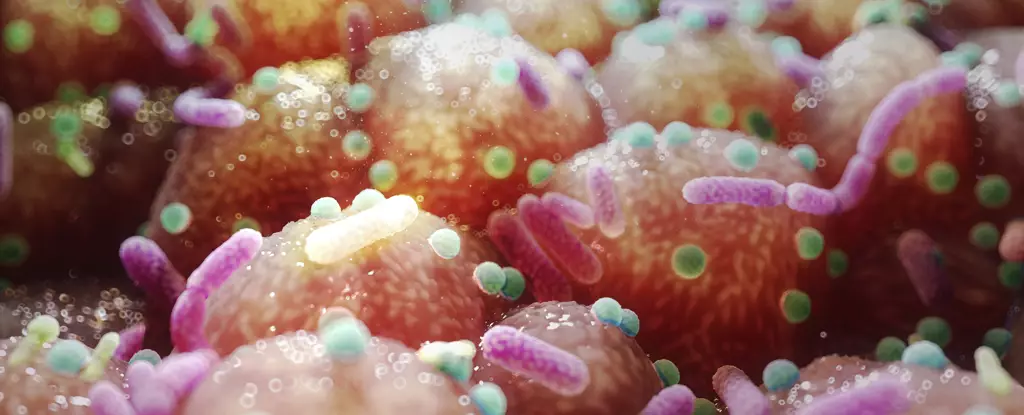The relationship between the gut microbiome and weight gain has been a topic of increasing interest in the scientific community. Recent research has suggested that microbes living in our guts play a significant role in regulating metabolism and affecting weight gain. A study conducted by Vanderbilt University biochemist Catherine Shelton and her colleagues has shed light on a potential mechanism through which gut bacteria could protect against excessive weight gain. By observing the effects of antibiotics and different diets on mice, the researchers found that a specific bacteria-derived compound, phenyllactic acid, played a crucial role in preventing weight gain caused by a high-fat diet.
The study involved giving young mice either a high or low-fat diet, with or without exposure to antibiotics. Surprisingly, mice that were only given penicillin antibiotics did not gain weight. However, when the mice were on a high-fat diet in addition to antibiotics, weight gain was observed. To understand the underlying mechanism, the researchers analyzed the gut bacteria in these mice. They found a significant decrease in Lactobacillus bacteria in the weight-gaining mice exposed to antibiotics. Previous studies have linked disturbances in the gut microbiome to a decrease in a regulatory protein called PPAR-γ2, which is involved in fat processing in the intestines. The researchers observed the same decrease in mouse cells that line their intestines.
Further investigation led the researchers to identify a molecule produced by Lactobacillus called phenyllactic acid. This compound interacts with the PPAR-γ2 receptor in gut cells, which plays a role in the transfer of lipids from the digestive tract. The team demonstrated that phenyllactic acid blocked fat secretion in intestinal epithelial cells. They found that the lack of this microbe and its metabolite alters the way intestinal epithelial cells package fat, leading to an increase in fat circulation. When the researchers gave young mice phenyllactic acid, it protected them from the metabolic dysfunction caused by a combination of early antibiotic exposure and a high-fat diet.
Although the study was conducted in mice, the researchers believe that the findings could have important implications for human health. Humans share similar components in their gut microbiome, and it is known that baby poop contains phenyllactic acid levels that change with the abundance of Bifidobacterium. Lactobacillus, which is commonly used in probiotics and found in fermented foods like kimchi and kombucha, also produces phenyllactic acid. Some cultures already encourage their children to consume fermented milk, inadvertently providing this protective compound.
The researchers suggest that maintaining a healthy, low-fat diet may help mitigate the impact of antibiotics on the gut microbiome in young humans. Probiotics containing Lactobacillus could also be beneficial in promoting a healthy gut microbiome and preventing excessive weight gain. While the findings from this study are promising, further research is needed to confirm the mechanism in young humans and to explore the potential therapeutic implications.
The study conducted by Shelton and her colleagues provides valuable insights into the relationship between gut bacteria, weight gain, and the role of phenyllactic acid. The findings highlight the importance of maintaining a healthy gut microbiome for overall metabolic health and weight regulation. Further research in this field could lead to the development of novel interventions for preventing and treating obesity. In the meantime, individuals can incorporate fermented foods and probiotics into their diet, along with a healthy, low-fat eating plan, to support their gut health and potentially reduce the risk of excessive weight gain.


Leave a Reply